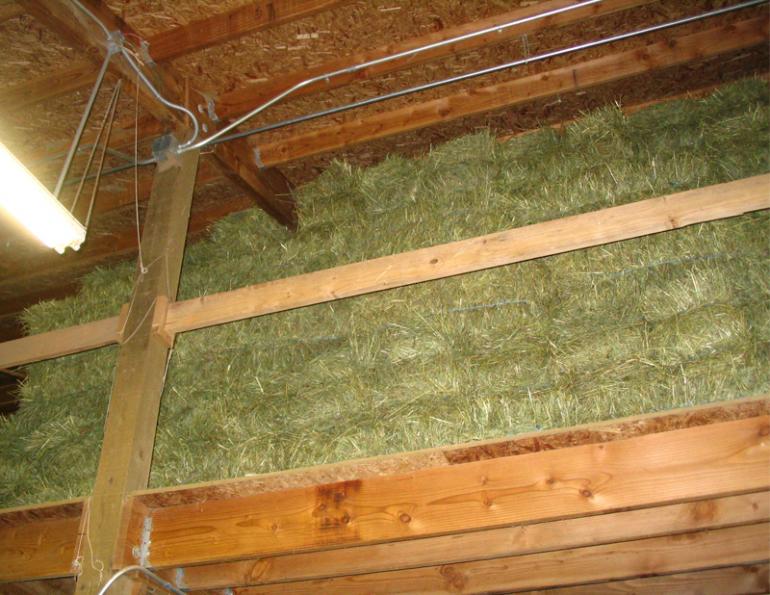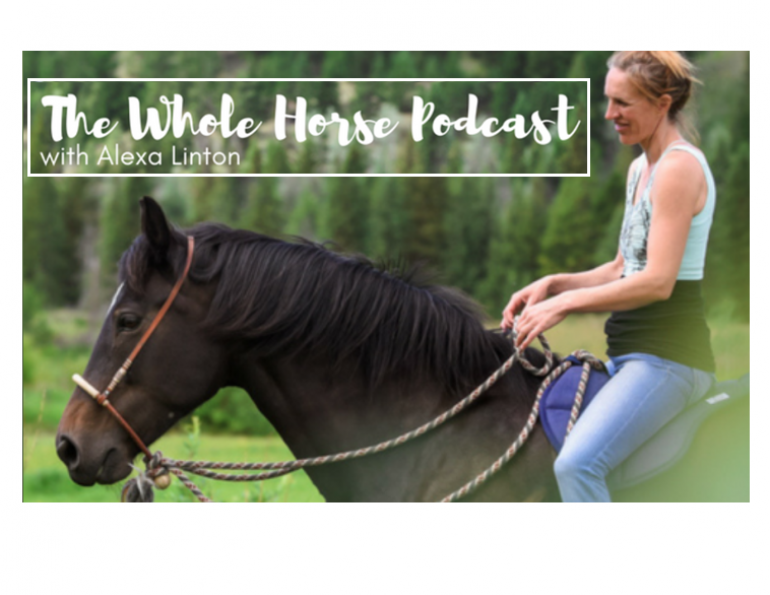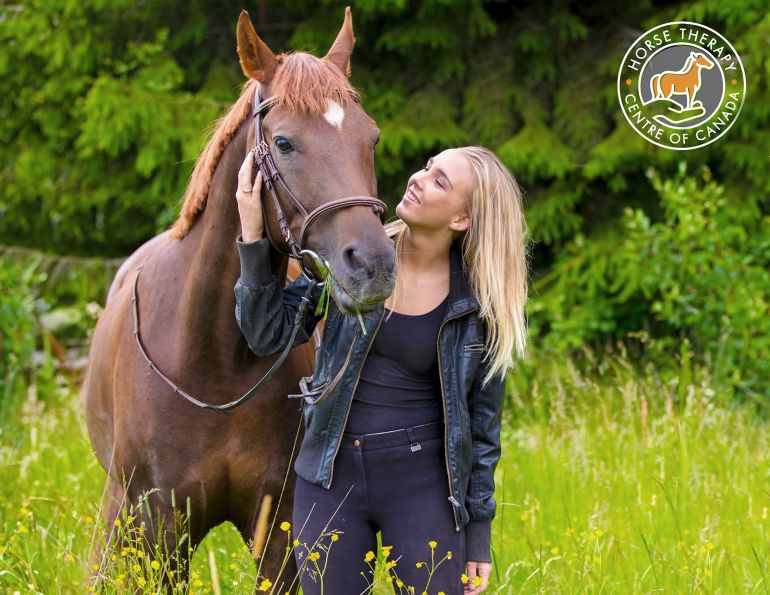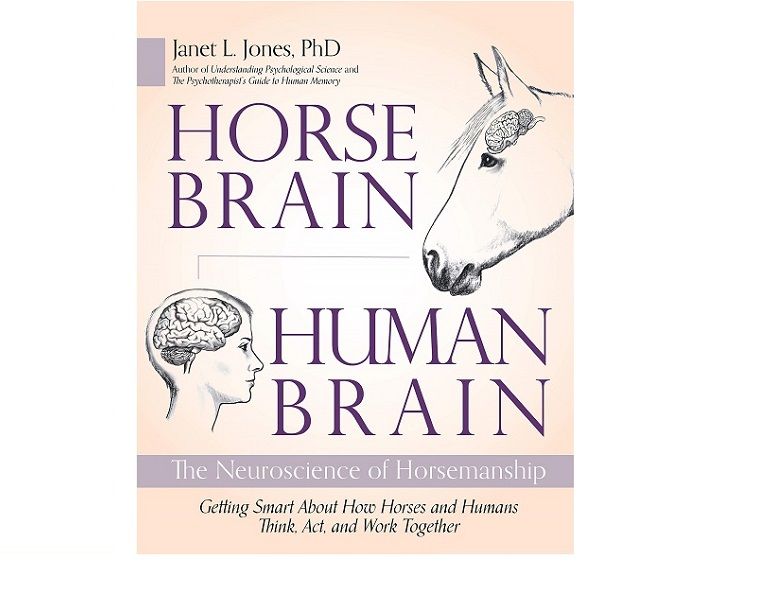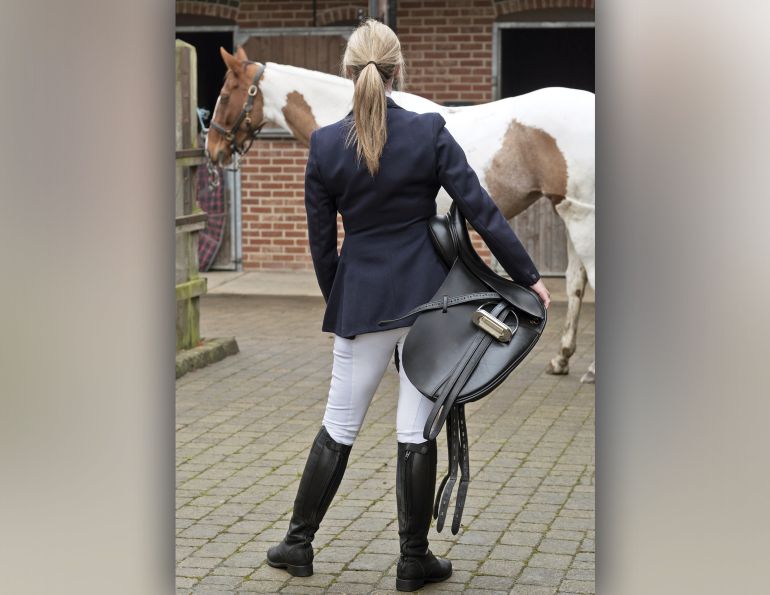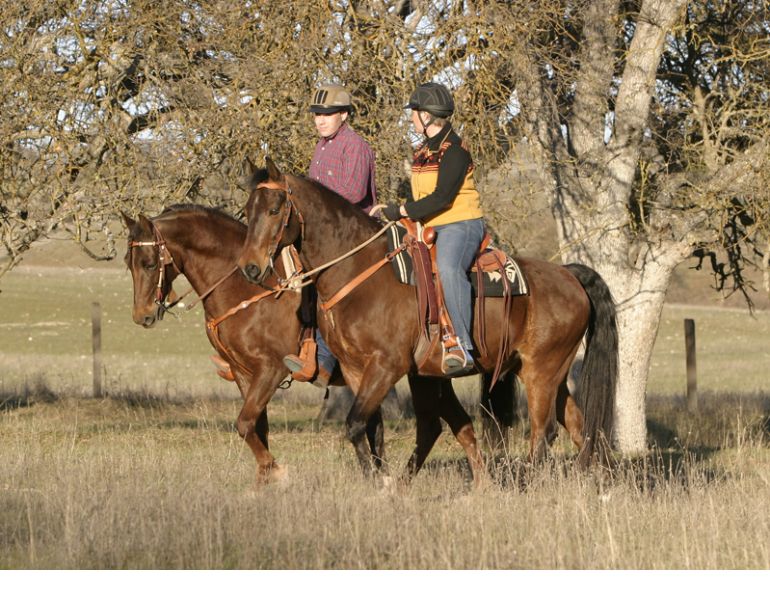By April Clay, M.Ed., Registered Psychologist
When you first begin to ride, it’s all about where your leg goes and how to find the brakes when necessary. You may be ever so slightly aware that there is another component to this sport, but you’ve got your brain on maximum capacity and quite enough to capture your focus.
Later, when you have the basics mastered, you start to discover the finer elements of horse sport. One of these finer points is how your energy impacts your mount.
In any sport, it is crucial to know the amount of energy or intensity that is optimal to your performance. But equestrians can’t forget they’re part of a team, and our partners have their own preferences when it comes to energy.
What Is Intensity?
Intensity is another way of describing the kind of energy you carry in your body. High intensity is marked by an explosive sensation of power. Physically it means increased respiration, heart rate, and muscle tension. It’s part of what helps a power lifter heave that barbell. On the opposite end of the scale, low intensity not surprisingly feels more relaxed and is associated with less muscle tension and a lower heart rate. A target shooter requires this level of intensity to succeed in his sport — you can imagine how difficult it would be to achieve precision with a high heart rate and copious amounts of energy and adrenaline coursing through your body.
In horse sports, the same general rules apply. The more power necessary (e.g. show jumping, barrel racing) the more energy you need; the more technical (e.g. dressage, reining, hunters) the less you need. As many dressage riders have undoubtedly experienced, too much tension and energy in the latter category leads to a loss of focus on detail and an unrefined performance.
Intensity is physiological and as such, is experienced physically in ways that are not always pleasant. However, what ultimately matters is your perception of what is happening in your body. A rapid heart rate can be thought of negatively: “I must be nervous. I can’t ride when I feel like this.” Or positively: “All right, I am getting ready. It’s show time!” Whatever level of intensity you end up pursuing, try to think of it as being associated with a positive mood state. Obviously this will be more productive for your performance and simplify your goal.
Know Your Numbers
Every rider has a preferred energy style. Are you normally a highly strung person, like an over-revved race car, or are you more of a pickup truck, slowly chugging along? We all start with a baseline energy that comes most naturally to us. If you’re not sure, ask your trainer or stablemates for feedback. They should be able to give you some pretty accurate readings.
Horses and riders have a natural energy style which may or may not match that of their partners or their disciplines. The best horse and rider matches are typically opposites: a relaxed horse with an intense rider, or a spirited horse with a calm rider. Photo: Robin Duncan Photography
For the sake of ease, think of intensity on a ten point scale, with ten being the highest and one the lowest.
Your natural number may or may not represent the energy level at which you perform your best. It may be you’re an eight most of the time, but your sport requires more of a four and somewhere in the lower range is also where you excel when you’re in the ring. In order to first determine what your optimal number looks like, do some research. Think about the times when you competed at your best; what can you recall about how you felt?
For example, John, a jumper rider, knew that he rode his best when he felt somewhat excited about what was to come. His body felt light and responsive. His horse also seemed to respond well when he was in this state. When John was at his worst, he felt listless and unmotivated. His whole body seemed tight and slow to react. His mount would become hyper sensitive to any aid he applied and he generally felt out of sync with what was happening.
When I asked John to apply a number to his effective state in terms of energy, on a scale from one to ten, he chose seven. So ask yourself, what is your number?
When you have established that information, it’s time to consider your teammate. Do not forget to assess your horse’s style and even assign a number. Are you sitting on a highly sensitive mare? Or paired with a plodding Warmblood that doesn’t seem to feel your leg pressure most of the time? Just like you, every horse comes with their own individual preference, which is part of what makes the sport so challenging.
Matchmaking
Are you and your mount matching or clashing? Are you a match made in heaven or… made somewhere else? The easiest matches, just like in romance, are those of opposites. A high strung horse and easy going rider balance each other, as do the sluggish mount with the spirited rider.
The not so easy matches tend to be too much alike. With a low horse and low rider, who will create the energy? The high rider and high horse both get over the top, but together they can literally jump the rails.
Just to complicate matters, you can also have less than ideal matches with the horse sport of your choice. You might love to ride the jumpers, but not have much natural intensity or enjoy taking risks.
Ultimately, the number you pick as your target will be a range. It will represent what works best for you and your horse. If you are one of those tough horse-rider matches, you’re going to have to think about your horse’s needs as well and plan accordingly. Riders who have multiple mounts constantly have to take this into consideration.
One of Canada’s top riders, Ian Millar, is a great example of someone who practices this art. “There times when I may be sitting on a horse that needs more energy. So I do this by changing my thoughts to how important the competition is, how much we need to win. This energy is transmitted to the horse and he changes. Likewise, I may have a sensitive horse who needs to come down a bit, so I focus my thoughts on what a beautiful day it is, what a pleasure it is to be out there, to lighten things up.”
Learn To Regulate
Krista is a junior dressage rider who was having difficulty regulating her emotionally sensitive nature. To add to the challenge, her mare was extremely reactive and spooky. But with persistence, she was able to employ strategies she could use to bring herself close her number on demand.
“What I found is that the things I used to calm myself down also helped my horse. There were also things I did for her that helped me chill out too, like I would talk to her repetitively and soothingly. It was like I was speaking to both of us!”
If you have an emotionally sensitive nature, develop a series of calming statements to bring yourself down a few notches. Search for words or phrases that have emotional impact. Photo: Robin Duncan Photography
Developing a series of calming statements is one way to bring yourself down a few notches. Search for words or phrases that have emotional impact. Something as simple as “remember your training, you’ve done it all before” can be extremely powerful for some riders. To determine your calming phrases or language, make an extensive list first by letting yourself brainstorm. Then, read your list to yourself while being aware of how these statements make you feel. Do they evoke comfort and reassurance and if so, to what degree? Choose only those that illicit a strong response in your system. If your body responds, you know you’re on the right track.
If you need to increase your intensity, the process is the same. Through trial and error, you will need to develop several ways you can effectively influence the energy in your body in the “up” direction.
To accomplish this, Mandy, a barrel racer, has what she refers to as her “tool box of energy revs.”
“For one thing, right before I go in I growl at those barrels. I think about attacking them. I love the feeling of doing it. It makes me feel aggressive and alive. My focus becomes very precise too and my whole body tingles with anticipation.”
There are obviously many ways to take yourself up and down the energy scale. It will take practice to know how to regulate your own system. Speaking to this skill, Mandy says, “I know precisely what my number eight looks like. I think about this number all the time now. When I’m training I like to check on it once in a while. I will ask myself if I’m in that zone and if not, I will practice getting myself there. I have a big number eight posted on the inside of my tack locker.”
Make it your goal to get to know your number intimately. Be aware of what moves you up and down the scale. Practice effecting this change with different strategies until you have confidence in regulating your physiology. Think of it like the ability to change your own gears as if you were a car. Remember that you cannot control your performance until you can control yourself.
To read more articles by April Clay on this site, click here.
Main photo: Robin Duncan Photography - Sports needing power and speed, such as show jumping and barrel racing, need more intensity, while more technical sports like dressage and reining require less intensity. By being aware of your intensity level, you can work to actively change it to positively affect your performance.



